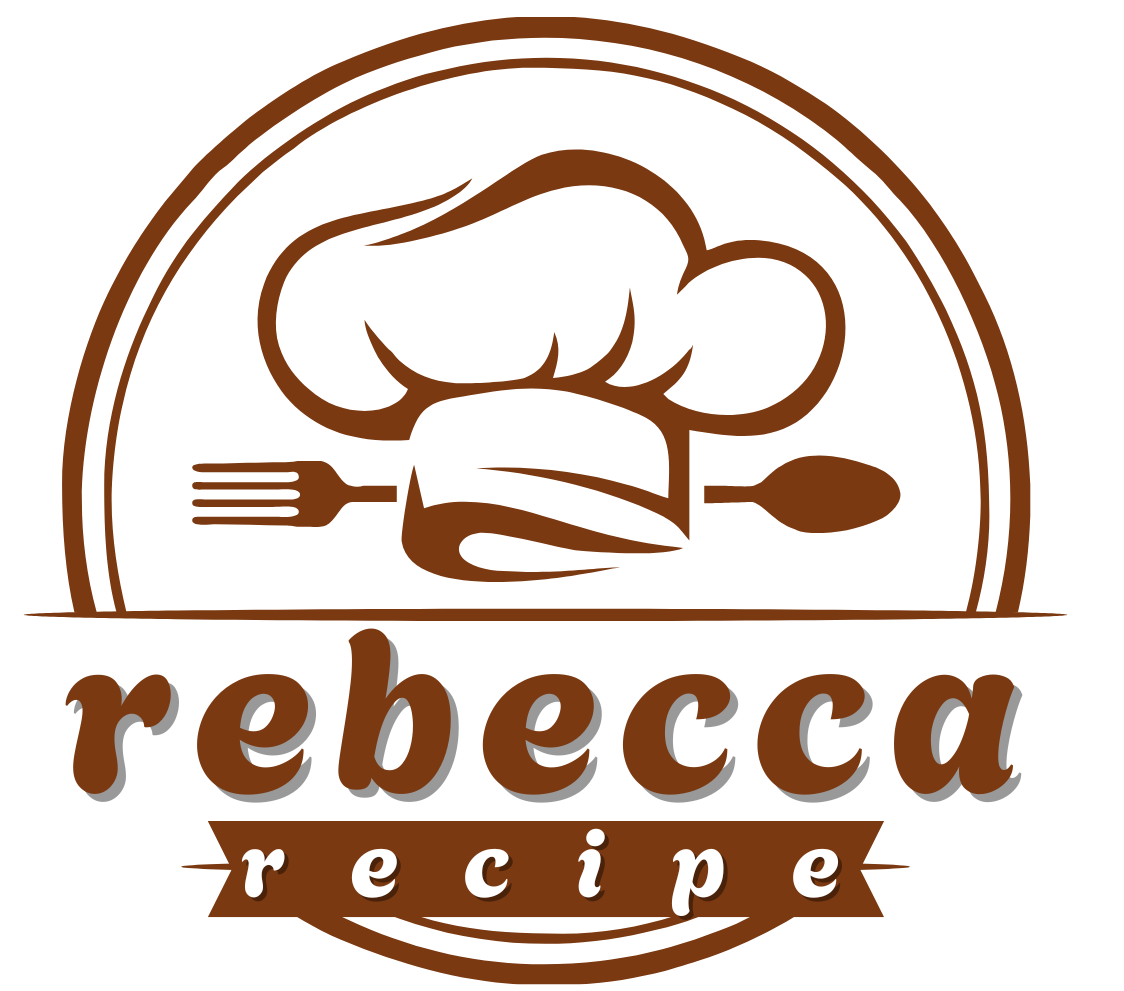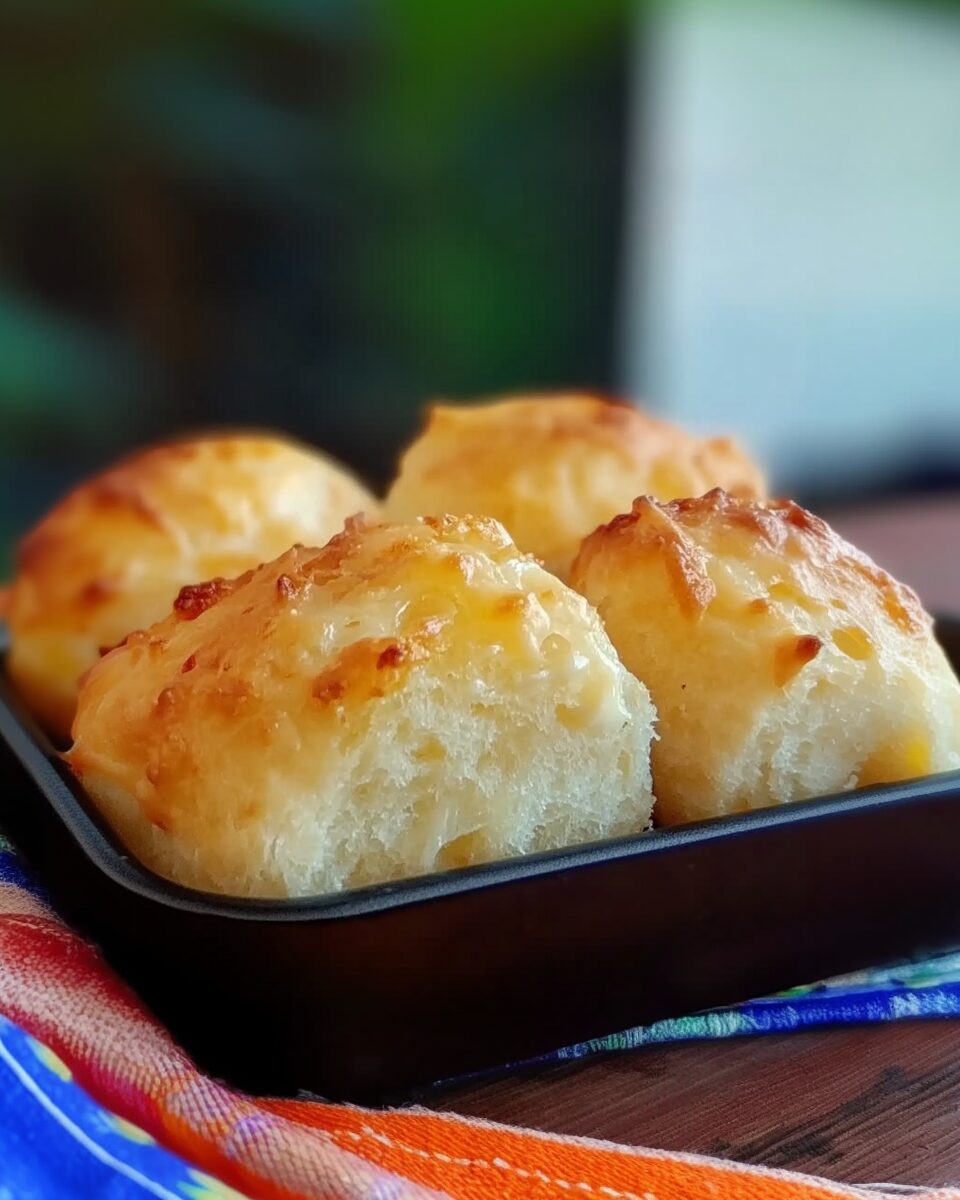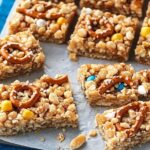Brazilian Crispy Cheese Bread, known as Pão de Queijo, is a delicious, gluten-free treat made from tapioca flour and cheese. This savory snack is crispy on the outside and soft on the inside, offering a delightful chewiness. Often served as a breakfast item or snack, it is a popular choice in Brazil, perfect with coffee or enjoyed as an appetizer at gatherings. The combination of cheeses creates a rich, flavorful bite that will have everyone coming back for more.
Full Recipe:
Ingredients
- 2 cups tapioca flour
- 1 1/2 cups shredded mozzarella cheese
- 1 cup grated Parmesan cheese
- 1/2 cup milk
- 1/2 cup water
- 1/4 cup vegetable oil
- 1/2 teaspoon salt
- 1/4 teaspoon baking powder
- 1 large egg
Directions
- Preheat the oven to 375°F (190°C).
- In a medium saucepan, combine the milk, water, oil, and salt. Bring to a boil over medium heat, stirring occasionally.
- Once the mixture has come to a boil, remove from heat and add the tapioca flour. Stir until smooth. Let the mixture cool slightly.
- Add the shredded mozzarella, grated Parmesan, and baking powder to the mixture, stirring well to combine.
- Add the egg and mix until the dough is smooth and slightly sticky.
- Grease a mini muffin tin or use silicone muffin molds. Spoon the dough into the molds, filling each cup almost to the top.
- Bake for 15-20 minutes or until golden brown and puffed. Let the cheese bread cool slightly before serving.
Nutrients
Per serving (1 piece):
- Calories: 120
- Total Fat: 9g
- Saturated Fat: 5g
- Cholesterol: 20mg
- Sodium: 160mg
- Total Carbohydrates: 9g
- Dietary Fiber: 0g
- Sugars: 1g
- Protein: 3g
The Origin of Pão de Queijo
The origins of Brazilian Crispy Cheese Bread, or Pão de Queijo, date back to the 18th century in Brazil, specifically in the state of Minas Gerais. Minas Gerais is known for its rich history of dairy farming and cheese production, which heavily influenced local cuisine. The bread was originally made using locally sourced cheeses, such as Minas cheese, and tapioca flour, which is derived from cassava root, a plant native to Brazil.
Tapioca flour, which is naturally gluten-free, was the perfect substitute for wheat flour in a time when wheat wasn’t widely grown in Brazil. By combining this flour with cheese, water, milk, and oil, the locals created a savory bread that became a staple in the region. As Pão de Queijo became more popular, it spread throughout Brazil and eventually gained recognition beyond the country’s borders.
Over the years, variations of the recipe began to emerge, depending on the region. Some areas used different types of cheese, while others made the bread larger or smaller, depending on the occasion. In modern times, the bread is typically made with a combination of mozzarella and Parmesan cheeses, but variations still exist, and different cheeses can be used to suit personal preferences.
The Key Ingredients That Make Pão de Queijo Unique
One of the most distinctive features of Pão de Queijo is its use of tapioca flour, which gives it its unique texture. Unlike traditional breads made with wheat flour, Pão de Queijo has a chewy, almost elastic quality due to the tapioca starch. This starch absorbs liquid well and contributes to the bread’s slightly gooey interior, which is contrasted by the crispy exterior that forms during baking. The result is a bread that’s light, airy, and satisfying in every bite.
The other main ingredient that contributes to the flavor and texture of Pão de Queijo is cheese. The recipe typically calls for a combination of mozzarella and Parmesan cheeses, though variations may include cheeses such as provolone or cheddar. Mozzarella provides the bread with its characteristic chewiness and mild flavor, while Parmesan adds a sharp, nutty taste that balances the richness of the mozzarella. The combination of these two cheeses creates a harmonious flavor that is both savory and indulgent.
Eggs are also a key ingredient, helping to bind the dough together and contributing to the structure of the bread. Additionally, milk and oil are added to the mixture, ensuring that the bread stays moist and soft while also helping to create the golden-brown crust. The ingredients, though simple, come together in perfect harmony to create a bread that is truly one of a kind.
Why Pão de Queijo Is Perfect for Any Occasion
Pão de Queijo is a versatile and crowd-pleasing treat that can be served in a variety of settings. Its crispy exterior and soft interior make it the perfect bite-sized snack that everyone can enjoy. Whether you’re hosting a gathering, looking for an appetizer to serve with drinks, or simply enjoying it as a breakfast item, Pão de Queijo fits the bill for any occasion.
In Brazil, Pão de Queijo is most commonly served at breakfast, paired with a hot cup of coffee. The bread’s chewy texture and savory flavor are the perfect accompaniment to the strong, bold flavors of Brazilian coffee. Pão de Queijo is also commonly enjoyed as a snack throughout the day, and it is often served alongside other Brazilian treats at gatherings or parties.
The bread’s small, bite-sized shape makes it a great appetizer for parties or as an accompaniment to cocktails. Its flavor profile, which is rich but not overpowering, makes it a great addition to any spread of finger foods. Whether you’re serving it as part of a larger meal or on its own, Pão de Queijo will surely be a crowd favorite.
How to Enjoy Pão de Queijo
While Pão de Queijo is delicious on its own, there are many ways to elevate the experience and pair it with other foods or beverages. Here are a few ideas on how to enjoy this savory treat:
- With Coffee or Tea: In Brazil, Pão de Queijo is often enjoyed with a cup of strong, Brazilian coffee or a hot cup of tea. The warmth of the drink complements the bread’s crispy exterior and soft interior, creating a satisfying combination.
- With Dips: For a fun twist, you can serve Pão de Queijo with a variety of dips, such as guacamole, salsa, or a cheesy dip. The bread’s neutral flavor pairs well with a range of savory dips, adding an extra layer of flavor to the snack.
- As Part of a Cheese Platter: Since Pão de Queijo is made with cheese, it naturally pairs well with other types of cheese. Serve it alongside your favorite cheeses, such as brie, goat cheese, or cheddar, for a more elaborate appetizer or snack.
The bread can be eaten fresh out of the oven, or it can be stored for later. In fact, Pão de Queijo freezes well, so you can make a large batch ahead of time and enjoy it whenever you like. To reheat, simply warm it in the oven for a few minutes, and it will crisp up again, retaining its original texture and flavor.
Health Benefits of Pão de Queijo
While Pão de Queijo is a treat that’s meant to be enjoyed in moderation, it does offer some health benefits due to its main ingredients. For one, tapioca flour is gluten-free, which makes it an excellent choice for individuals who have gluten sensitivities or celiac disease. Since the bread doesn’t contain any wheat flour, it is also easily digestible for those who have trouble with gluten.
The cheeses used in Pão de Queijo, particularly mozzarella and Parmesan, provide a good source of calcium and protein. Calcium is essential for maintaining strong bones and teeth, while protein is necessary for muscle repair and overall health. The bread also contains healthy fats from the oil and cheese, providing a good source of energy. While it’s best enjoyed in moderation due to its calorie content, Pão de Queijo can be part of a balanced diet when paired with fresh fruits or vegetables.
Making Pão de Queijo at Home
Making Pão de Queijo at home is surprisingly simple, and the results are well worth the effort. The dough comes together quickly, and with just a few basic ingredients, you can create a delicious treat that rivals anything you’d find in a bakery. The key to making perfect Pão de Queijo is ensuring that the dough is well-mixed and that the cheese is evenly distributed throughout. You’ll also want to bake the bread at the right temperature to ensure a crisp exterior and soft interior.
One of the best things about making Pão de Queijo at home is that you can experiment with different cheeses or add other ingredients, such as garlic or herbs, to customize the flavor to your liking. You can also make it in different sizes, depending on your preference. Whether you want larger rolls or mini cheese puffs, the recipe is versatile enough to accommodate your needs.
Conclusion
Brazilian Crispy Cheese Bread, or Pão de Queijo, is a delightful and versatile snack that’s sure to become a favorite in any household. Whether enjoyed as a breakfast treat, a savory appetizer, or a party snack, Pão de Queijo brings a taste of Brazil to your table.






